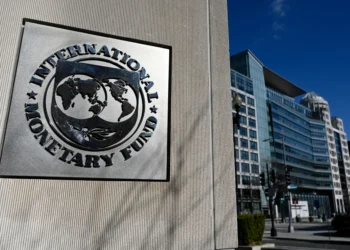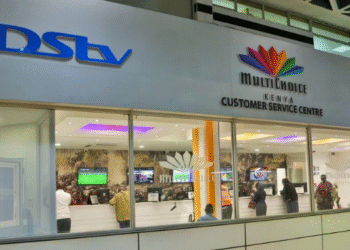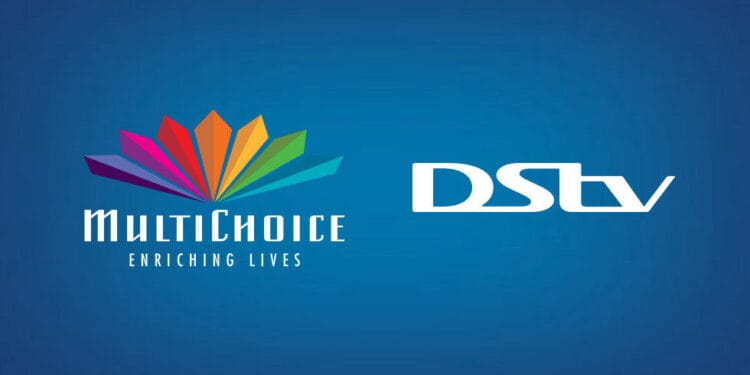MultiChoice, the media giant behind popular pay-TV services DStv and GOtv, has reported a staggering loss of 3.7 million subscribers in less than two years, shrinking its customer base from 23 million to 19.3 million.
The dramatic decline, detailed in reports from Citizen SA and corroborated by industry analysts, underscores the mounting challenges facing the South African company as it grapples with economic headwinds, shifting consumer preferences, and fierce competition in the rapidly evolving entertainment landscape.
A Steep Decline in Numbers
The subscriber drop, which spans late 2022 to early 2025, marks one of the most significant setbacks in MultiChoice’s nearly four-decade history.
Once a dominant force in Africa’s pay-TV market, the company has seen its foothold erode as economic pressures and technological disruptions reshape how viewers consume media.
According to data cited by GBC Ghana Online on March 31, 2025, MultiChoice’s active subscriber count plummeted from a high of 23 million to 19.3 million, a decline of over 16% in under 24 months.
The loss comes amid a broader trend of subscriber attrition. In its interim financial results for the six months ending September 30, 2024, MultiChoice reported shedding 1.8 million subscribers year-on-year, bringing its total to 14.9 million—a figure that has since deteriorated further.
Nigeria and Zambia have been pinpointed as key markets driving the exodus, with economic factors cited as primary culprits.
Economic Pressures and Pricing Woes
MultiChoice has attributed much of the decline to macroeconomic challenges across its operational regions. In Nigeria, Africa’s most populous nation and a critical market for the company, inflation has soared above 30%, driving up the costs of food, electricity, and fuel.
This economic strain has forced many households to cut discretionary spending, including pay-TV subscriptions. The company reported losing 243,000 subscribers in Nigeria alone between April and September 2024, a trend that appears to have accelerated into 2025.
Zambia has also contributed significantly to the losses, with drought-induced power outages of up to 23 hours a day rendering DStv and GOtv services unusable for many.
Across the Rest of Africa (RoA) operations, MultiChoice shed 566,000 subscribers in the same six-month period, highlighting the regional scope of the crisis.
Compounding these challenges are MultiChoice’s pricing decisions, which have sparked widespread backlash. In Nigeria, the company implemented three subscription hikes within 12 months—April and November 2023, followed by May 2024—despite a tribunal order barring the latter increase.
The defiance led to a N150 million fine and a mandated one-month free subscription for customers, but it also alienated subscribers. A further 21% price increase on the DStv Compact package, from N15,700 to N19,000, effective March 1, 2025, has only deepened the discontent.
Posts on X reflect the frustration, with users like @cashoggy
lamenting, “Imagine paying 25,700 for a premium subscription when you can surf the internet and watch all the programs for less.”
Competition from Streaming Giants
Beyond economics, MultiChoice faces an existential threat from streaming platforms like Netflix, Disney+, and Amazon Prime Video, which have gained traction across Africa.
These services offer on-demand content at lower costs and with greater flexibility, appealing to a younger, tech-savvy audience increasingly turning to smartphones and smart TVs.
Industry observers note that MultiChoice’s traditional satellite model, reliant on bundled packages and fixed subscriptions, struggles to compete with the pay-as-you-go allure of streaming.
The company’s own streaming service, Showmax, has shown promise, reporting a 50% year-on-year growth in its paying customer base by September 2024.
However, the R1.6 billion investment in Showmax—part of a broader push into digital entertainment—has yet to offset the losses in its core DStv and GOtv businesses. Analysts suggest that while Showmax’s growth is a bright spot, it may not be enough to stem the tide of subscribers abandoning linear TV.
Service Disruptions and Consumer Fatigue
Service reliability has also played a role in the decline. In South Africa, load shedding—persistent power cuts—has disrupted viewing, frustrating subscribers who pay for a service they can’t consistently access.
MultiChoice acknowledged this in 2023, ending promotional pricing meant to retain customers during such hardships, a move that saw 311,000 non-revenue-generating users drop off its rolls.
Consumer fatigue with repetitive content and a perceived lack of innovation has further eroded loyalty. Posts on X, such as @NdubuisiNC
’s comment, “The downfall of this company in Nigeria will be televised… Nigerians have cried for years about how boring it is,” highlight a sentiment that MultiChoice has failed to adapt its offerings to modern tastes, with football channels often cited as the sole remaining draw for many.
Financial Fallout and Corporate Uncertainty
The subscriber loss has taken a toll on MultiChoice’s bottom line. For the fiscal year ending March 31, 2024, the company reported a R4.1 billion loss, up from R2.9 billion the previous year, rendering it technically insolvent with liabilities exceeding assets.
Foreign exchange losses, particularly from Nigeria’s naira depreciation, amounted to R4.5 billion in 2024 alone, exacerbating the financial strain. Despite cost-cutting measures saving R1.9 billion and a 3% revenue uptick from inflationary pricing, profits dwindled from R1.5 billion to a mere R7 million by September 2024.
The company’s future remains uncertain amid a pending takeover by French media giant Canal+. Initially slated for April 2025, the R30 billion deal has been delayed to October 2025, adding to investor unease.
MultiChoice CEO Calvo Mawela has described the current climate as “the most challenging operating conditions in almost 40 years,” yet he remains optimistic about restoring a positive net equity position by late 2025 with over R10 billion in available funds.
MultiChoice Fight for Survival
MultiChoice is not standing still. Alongside Showmax, new ventures like DStv Stream (up 71% in revenue), DStv Internet (up 85%), and SuperSportBet show early traction.
The company has also integrated streaming giants like Netflix into its decoders, aiming to bridge the gap between satellite and digital. Yet, these efforts face an uphill battle against a backdrop of subscriber hemorrhage and economic volatility.
As MultiChoice navigates this crisis, its ability to innovate and regain consumer trust will determine whether it can halt the slide from 23 million to 19.3 million—and beyond.
For now, the once-unassailable pay-TV titan finds itself at a crossroads, with millions of former subscribers signaling a shift that may redefine entertainment across the continent.















